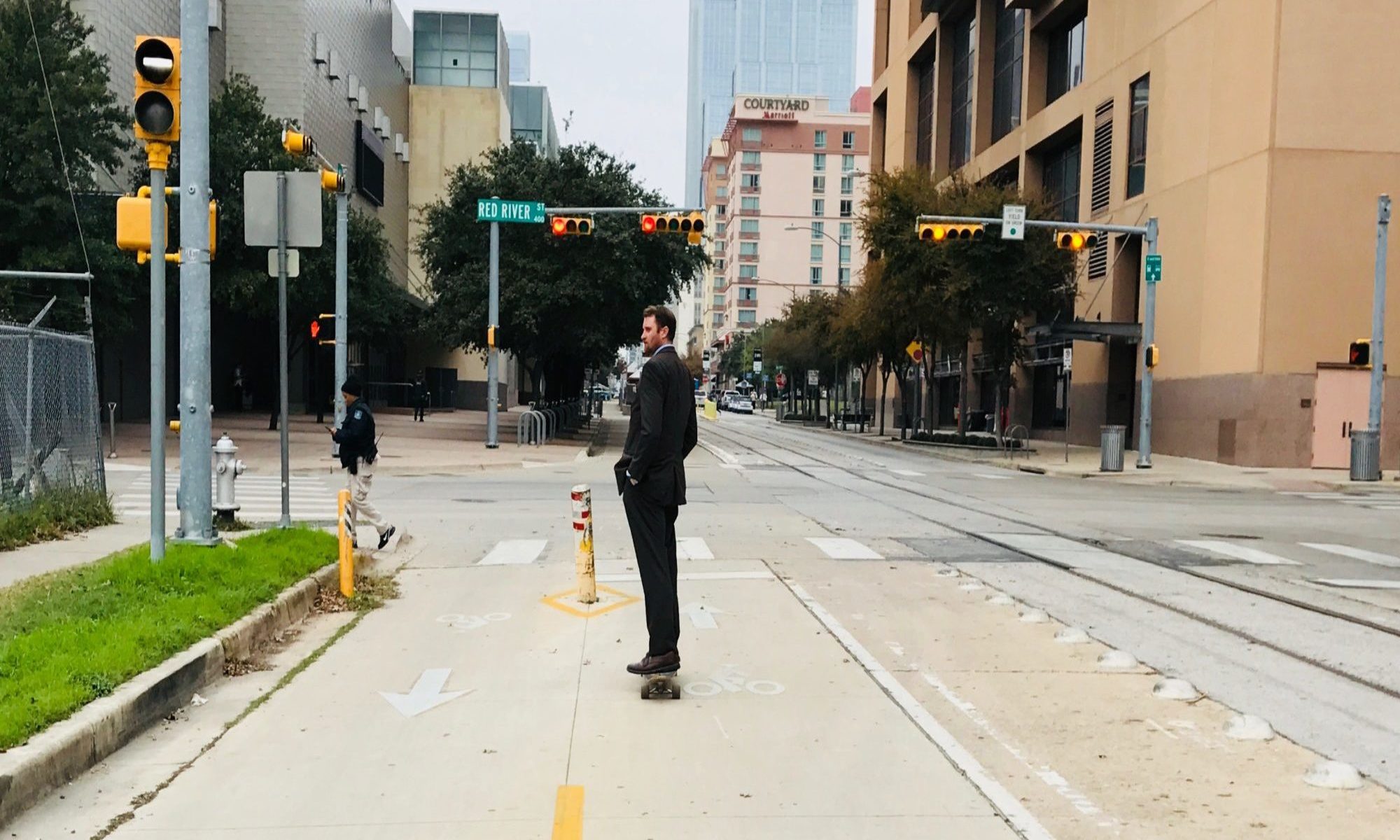The public comment phase is open for the Texas Department of Transportation’s (TxDOT) 2023 Unified Transportation Program (UTP), and the Texas Transportation Commission (TPC) needs to hear from you about what you hope they can achieve with $117 billion in public spending over the next ten years ($85 billion in proposed projects and $32 billion in project development costs).
Find out more at Unified Transportation Program – Public Involvement
Click on the Comment Form to submit a comment right now
or send an email to UTP-PublicComments@txdot.gov
At the January meeting of the Texas Transportation Commission, we requested that TxDOT staff help the people of Texas better understand the possibilities and the decisions that will be made in this UTP process, by analyzing how much discretion the TTC has to spend funds on things other than roadways focused on single occupant users (SOVs), such as public transportation, sidewalks, and bike lanes.
While we of course do not expect the TTC to suddenly defund major road projects across the state in a broad sweep to shift billions to public transportation, safety, and ADA investments, we think it is important to clarify the fact that the TTC could be choosing to invest significantly more in diverse transportation investments, and should begin to ramp up spending on things other than roads to eventually achieve the balanced approach that most Texans want.
As far as we know, no such analysis has been made publicly available by TxDOT to those seeking to understand the UTP. We hope that TxDOT can incorporate this type of transparency into this giant decision-making process so that the people of Texas and elected officials can fully understand all the points in the decision-making process where decisions can be made on how to invest public funds.
Given the lack of information from TxDOT, we developed our own guesstimate of how much money is at the discretion of the TTC to theoretically spend on public transit, active transportation, safety, and TxDOT’s Americans with Disabilities Act transition plan.
Safety
To start: there are essentially no limits on how much the TTC could dedicate to focused safety projects. Almost all funds from the Federal Highway Administration can be used for safety projects should a state decide to do that. While this UTP contains a significant increase in dedicated safety funding from the previous year, the FY 2020 and 2021 UTP each contained increased dedicated safety spending of an additional $300 million a year intended to focus on the new Road to Zero goal.
The proposed UTP includes two pots of funds with dedicated safety spending, Category 8 Safety and Category 11S District Safety, with $3,739,951,654 and $496,638,346 respectively. To return to the rate of increased spending in FY2020 and FY2021, the TTC would need to dedicate an additional $2,215,161,000 over the full UTP period.
Given that traffic crashes cost the people of Texas significantly more than congestion and the near universal desire of Texans to support transportation safety spending, we believe this increased safety spending is more than justified, and will return significantly more return on investment than other items in the UTP.
Also to note: similar to safety, almost all funds from the FHWA could be dedicated to maintenance of existing transportation system instead of roadway expansions, if the TTC were to choose to do so. The proposed UTP includes a huge amount for maintenance, but also includes an extraordinarily and uniquely high amount for roadway expansions, which is in no way required by the funding sources.
ADA Transition Plan
There also seems to be essentially no limit on how the TTC could spend on upgrading all on-system facilities to ADA compliant sidewalks, ramps, and safe crossings. The recent TxDOT Comprehensive Accessibility Program (TCAP) includes a statewide map of these conditions and cost estimates, resulting in a statewide total cost to bring all TxDOT facilities up to ADA standards at $1.56 billion. The TTC can and should dedicate $156 million a year in this UTP to build an inclusive state transportation system by the end of this ten year plan.
Public Transportation
The State of Texas is unique in our nation given that the state has zero dedicated state funding for public transportation for our major metropolitan regions and does not allow our metro regions to vote to fund regional public transportation on their own – given the failure of Senator Carona’s local options bill in 2009. Our major metro regions are the only major metro region’s in the nation in this unique, wasteful position.
The legislature did pass a bill last session to reopen the Texas Mobility Plan (HB 2219) and Governor Abbott signed the bill into law. This frees up an estimated $3 billion in state funds over a ten year period, which can be spent on any mobility project, including public transportation. In the past, this fund helped build Austin’s downtown Red Line commuter rail station, as well as Houston’s Uptown Bus Rapid Transit (BRT) line.
Unfortunately, much of the state funding that the TTC allocates in the UTP is restricted to road building by the Texas legislature and Governor.
However, Federal Highway Administration (FHWA) funding actually is not required to be spent on highways. The recent Infrastructure Investment and Jobs Act (IIJA) contains extensive attempts to encourage states to make more efficient, equitable, effective decisions in spending transportation funding than they have done in the past, but the bill leaves huge portions of spending at the discretion of the states – in our case, at the discretion of the TTC.
To understand how much the TTC could choose to spend on public transportation, we analyzed the FY2022 apportionment to Texas – the FHWA funds awarded directly to the state based on formulas.
FY2022 – Texas FHWA apportionment from IIJA
Does not include FTA formula or any USDOT discretionary grants
| Texas | |
| National Highway Performance Program | 2,840,742,975 |
| Surface Transportation Block Grant Program | 1,381,983,069 |
| Highway Safety Improvement Program | 301,139,222 |
| Railway- Highway Crossings Program | 20,973,888 |
| Congestion Mitigation & Air Quality Improvement | 190,163,531 |
| Metropolitan Planning | 34,229,462 |
| National Highway Freight Program | 135,283,545 |
| Carbon Reduction Program | 123,226,823 |
| PROTECT Formula Program | 140,117,728 |
| Apportioned Total | 5,167,860,243 |
Of the above funds, the entirety of all of the following programs could theoretically be spent on public transportation: Surface Transportation Block Grant Program, Highway Safety Improvement Program, Congestion Mitigation & Air Quality Program, and the Carbon Reduction Program.
A State may transfer to the National Highway Freight Program, Surface Transportation Block Grant Program, Transportation Alternatives, Highway Safety Improvement Program, and Congestion Mitigation and Air Quality Improvement Program up to 50% of NHPP funds made available each fiscal year, according to FHWA.
70% of the Surface Transportation Block Grant Program is at the discretion of the TTC, while 30% is spent at the discretion of Texas Metropolitan Planning Organizations (MPOs).
FY2022 Texas FHWA apportionment that could theoretically be spent on transit
Does not include FTA formula or any USDOT discretionary grants
| FY2022 | |
| Total that could theoretically fund transit | 3,416,884,133 |
| Total TTC Discretionary that Could Fund Transit | 3,002,289,212 |
| Total MPO Discretionary that Could Fund Transit | 414,594,921 |
| Guesstimate of amount of FHWA funding that the TTC could theoretically allocate to public transportation in 10-year UTP | 30,022,892,120 |
According to our guesstimate, this year, the Texas Transportation Commission could choose to allocate up to $30 billion to public transportation for the people of Texas, but they are choosing not to do so. This is assuming that the apportionment amounts would be identical for the next ten years, which is not likely. The IIJA bill would actually increase these amounts over the next five years, before Congress would have to pass a new federal transportation bill or continue funding at the IIJA levels. But we hope this is a good guesstimate to give the people of Texas and decision makers a ballpark for understanding the possibilities that we have not been choosing to pursue.
Also to note: we believe it is possible that this interpretation of the total that could theoretically be spent on public transportation could also apply to active transportation investments. In theory, the TTC could choose to invest significantly more on making it safe for Texans to walk, bike, and use wheelchairs and other personal mobility devices than they are choosing to invest in this draft UTP.
We would not be surprised if there were major errors in this guesstimate process, which is why we asked TxDOT to analyze this concept six months ago, plenty of time to provide the people of Texas and decision-makers with this crucial information. There is a reasonable chance that some existing state law ties the hands of the TTC in their discretion in how to allocate these federal funds, but we are not aware of such a law.
Please do let us know if you find any big holes or mistakes in our assumptions and this guesstimate by replying on social media or sending an email to info@farmandcity.org.
Please engage in the public input process for the FY2023 Unified Transportation Program. Feel free to use our information to inform your comments, but you do not need to be a technical expert. You simply need to help the TTC understand the diverse transportation needs, desires, and visions of the people of Texas.
Find out more at Unified Transportation Program – Public Involvement
Click on the Comment Form to submit a comment right now
or send an email to UTP-PublicComments@txdot.gov

